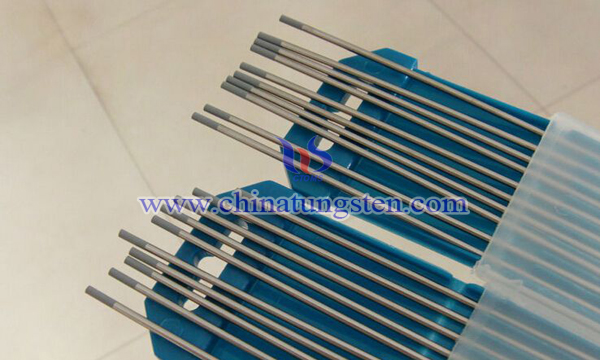Multiple Rare Earth Tungsten Electrode Sintering Method
- Details
- Category: Tungsten Information
- Published on Monday, 18 June 2018 17:54
Tungsten electron emitter is a key material for vacuum electronic components, inert gas shielded welding, plasma welding, cutting, spraying, smelting and special electro-optic sources. At present, the most of the materials are thorium and tungsten and cerium tungsten materials.

Thorium tungsten is radioactive, and cerium tungsten electrode is difficult to carry large current load. Therefore, the application range is limited and can not replace the thorium tungsten electron emitter in an all-round way. Therefore, the steps to improve the performance of tungsten electrode are not stopped. In recent years, the electron emitter doped with a variety of complex rare earth metal oxides has excellent electronic emission properties and can carry high current load. The comprehensive performance is better than thorium tungsten emitter and cerium tungsten emitter, and it is becoming the favorite favorite of the market. It is not ideal, and the yield is very low, which has stimulated people's interest in research.
Some scholars have proposed a multi element rare earth tungsten electrode sintering method, which includes the following steps:
1)According to the weight percentage, the content of each rare earth oxide containing La2O3, Y2O3 and CeO2 is 0.4 ~ 1.4%, and the total content of three rare earth oxides is 2 to 2.2%. The rare earth tungsten metal powder with the residual tungsten is added to the lubricant and is pressed into 13 * 13 x 450mm under 6-8MPa.
2)The above strips are pressed into the molybdenum mesh furnace for pre sintering, and the sintering temperature is controlled at 1150-1350 degrees centigrade for 35-40 minutes.
3)The pre-fired billet is fused and sintered, and the sintering current is increased to 2400A at a rate of 200 minutes for each additional 200A. After 2 minutes of incubation, the current is increased to 2500A. After 1 minute, the current is increased to 2700 A, hold for 1 minute, then add the final current to 2775-2825A. After holding for 14-16 minutes, the sintered billet can be obtained.
The sintering method is different from the traditional sintering method. Considering that the partial precipitation of rare earth elements directly causes the non-uniformity of the material structure and affects the subsequent processing performance, the present technology changes the traditional sintering technique to increase the sintering current to pursue the high billet density, and adopts the appropriate reduction in the sintering current. At the expense of high density of materials to obtain a uniform sintering technology, a proper reduction of the sintering current, the density of the sintered billet is controlled at 17.0-17.8g/cm3, and the rare earth tungsten billet obtained after sintering is uniform in structure and has a tungsten crystal. The particles are equiaxed and the rare earth second phase is evenly distributed at the grain boundaries. This low-density uniform structure can coordinate the deformation in the subsequent processing and the yield is above 75%. In addition, the rare earth component has a small burn and has excellent welding performance.
- Rare Earth Manufacturer & Supplier, Chinatungsten Online: www.chinatungsten.com
- Tungsten News & Prices of China Tungsten Industry Association: www.ctia.com.cn
- Molybdenum News & Price: news.molybdenum.com.cn
- Tel.: 86 592 5129696; Fax: 86 592 5129797; Email: sales@chinatungsten.com



 sales@chinatungsten.com
sales@chinatungsten.com